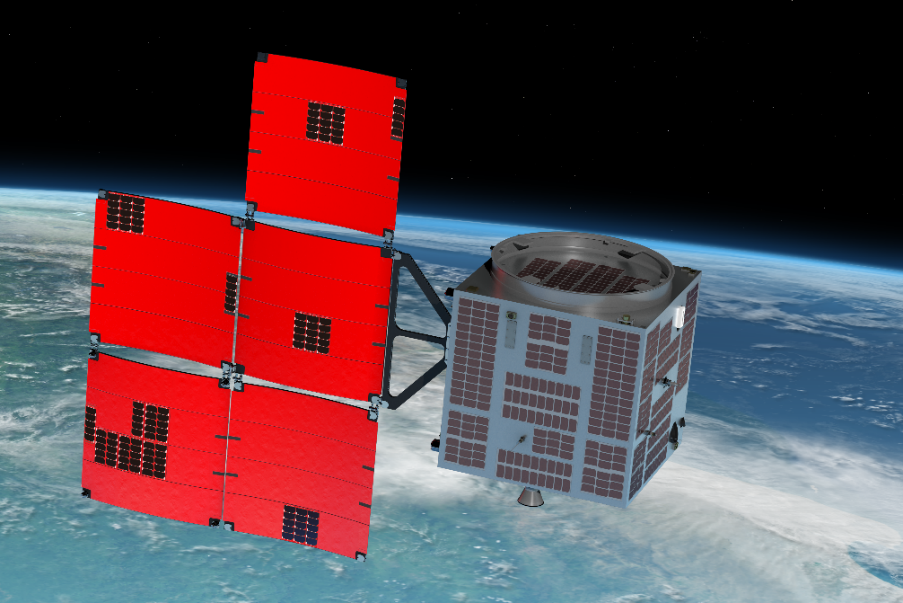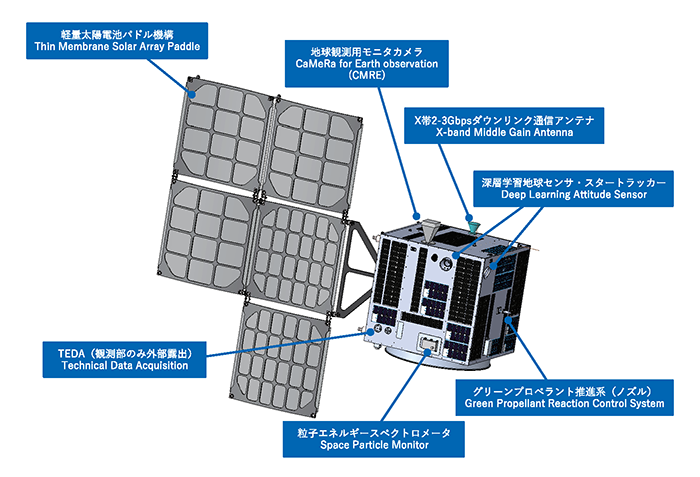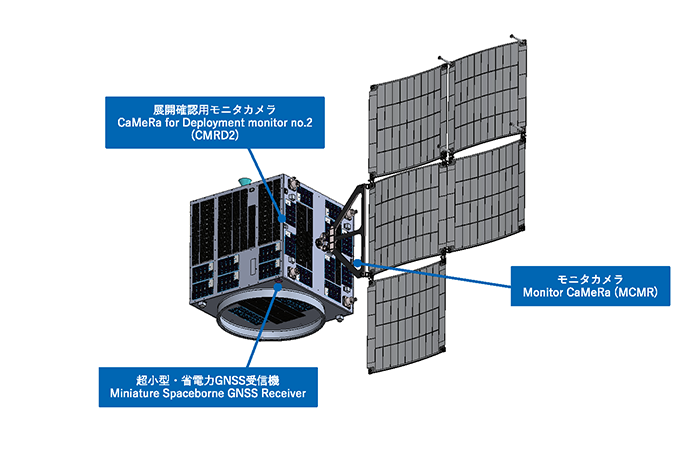RAPid Innovative payload demonstration Satellite 1 (RAPIS-1) Ends Its Operation
June 25, 2020 (JST)
National Research & Development Agency
Japan Aerospace Exploration Agency (JAXA)
The Japan Aerospace Exploration Agency (JAXA) hereby announces that the agency sent a set of commands to shut down the operation of the RAPid Innovative payload demonstration Satellite (RAPIS-1) at 7:50 (JST) on June 24, 2020. RAPIS-1 was launched from the Uchinoura Space Center by Epsilon-4 at 9:50 a.m. (JST) on January 18, 2019 for the on-orbit demonstration experiments of seven components and devices mounted on the satellite as part of "Innovative Satellite Technology Demonstration-1"*.
RAPIS-1 is a satellite designed for orbital demonstration of the components and devices selected for "Innovative Satellite Technology Demonstration-1," and a startup company developed and operated the satellite as the first case where JAXA consigned the manufacture and operation of a satellite to a startup.
Through the operation of RAPIS-1 for about a year, experiments were successfully made for all the demonstration themes, as reported by each of the proposing organizations in the attachment.
We would like to express our deep gratitude to all the related organizations and individuals for their cooperation and support to the development and operation of RAPIS-1.
*First on-orbit demonstration opportunity offered by JAXA for components, devices and Microsatellites/CubeSats developed by companies, universities and others under the Innovative Satellite Technology Demonstration Program.
http://www.kenkai.jaxa.jp/kakushin/kakushin01.html (Japanese only)
http://www.kenkai.jaxa.jp/eng/research/innovative/innovative.html
https://global.jaxa.jp/projects/sat/innovative/

On-orbit RAPIS-1 configuration (Illustrative image) ©JAXA
attachment
Major Results for Each Demonstration Theme Reported by Each Proposing Organization
Innovative FPGA (NBFPGA) NEC Corporation
Theme: An evaluation of space environmental durability of innovative FPGA on orbit
The FPGA demonstrated high performance in space as expected, with no soft errors being made during the operation period and with the successful completion of the rewriting experiment. Based on the results, examinations are being made for the implementation of a project to spread the use of innovative FPGA.
High data rate X-band Transmitter (HXTX)/X-band Middle Gain Antenna (XMGA) Keio University
Theme: On-orbit demonstration of X-band 2-3 Gbps downlink communication
With a 10-meter antenna at the Usuda ground station, the world's highest communication rate (2.65 Gbps) was achieved for data downlink in X-band frequency. This technology is expected to be applied by startup enterprise.
Green Propellant Reaction Control System (GPRCS) Japan Space Systems
Theme: On-orbit demonstration of Green Propellant Reaction Control System
The system became the first low-toxicity HAN*-based SHP163 propulsion system to succeed in on-orbit injection in the world. The favorable demonstration results include successful injection in multiple modes, including continuous injection and pulse injection modes.
*HAN: Hydroxyl Ammonium Nitrate
Space Particle Monitor (SPM) Japan Space Systems
Theme: On-orbit demonstration of Space Particle Monitor
The SPM was proved to provide enough performance as simplified measurement equipment to be used to elucidate how space radiation causes malfunction of devices, leading to the successful development of a small, light-weight and low-cost monitor that is fully competitive with products made by overseas companies.
Deep Learning Attitude Sensor (DLAS) Tokyo Institute of Technology
Theme: Development of Innovative Deep Learning Attitude Sensor
The achievements include the world’s first deep learning-based real-time recognition of visible light images on orbit and the demonstration of the three-axis attitude determination method by the application of the image recognition results.
Moreover, the star tracker consisting of COTS devices which enables an extremely low cost had been demonstrated in orbit. The obtained attitude determination accuracy was 13 arcsecond (RMS).
Based on the results of this demonstration, Amanogi, a venture launched by the Tokyo Institute of Technology, is working on the commercialization of a star tracker.
Thin Membrane Solar Array Paddle (TMSAP) JAXA
Theme: Thin membrane solar array paddle
In about a month after the launch, five thin panels were successfully deployed. Subsequently, electricity continued to be generated for a year as predicted, leading to the demonstration of the world’s highest electricity output to mass ratio.
Miniature Spaceborne GNSS Receiver (Fireant) Chubu University
Theme: On-orbit demonstration of a space-capable miniature GNSS Receiver
The GNSS* receiver was proved to be highly competitive in the market, being several times better than conventional GNSS receivers for small satellites in terms of the size, power consumption and pricing. As a result, 41 units were sold to universities, research institutes and companies in the private sector.
*GNSS: Global Navigation Satellite System

On-Orbit RAPIS-1 Configuration ©JAXA

On-Orbit RAPIS-1 Configuration ©JAXA